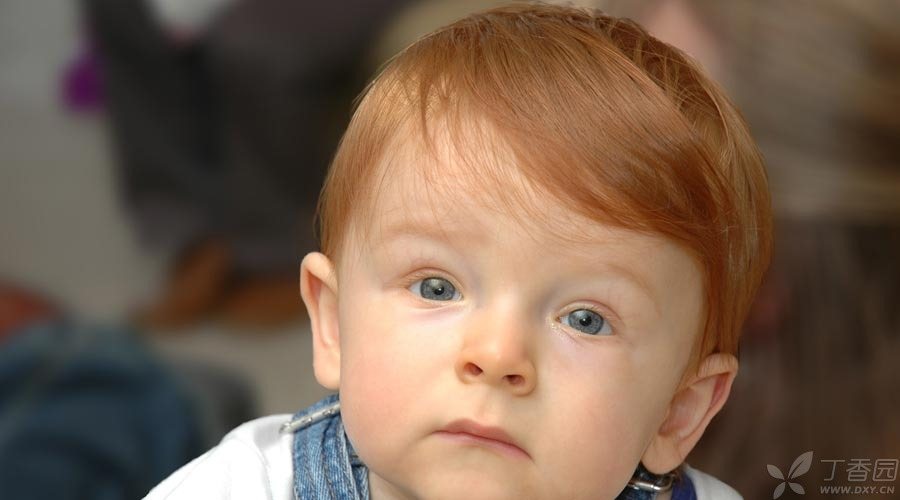
Neonatal transient myasthenia gravis
First of all, it is clear that myasthenia gravis is impossible for newborns delivered by non-myasthenia gravis mothers, because myasthenia gravis is an autoimmune disease and is related to the abnormality of the immune system. The immune system of newborns is not fully developed. How can myasthenia gravis occur? Therefore, myasthenia gravis does not need to be listed as the category of differential diagnosis for children with ptosis or abnormal eyeball movement immediately after delivery by healthy mothers.
In theory, Neonatal transient myasthenia gravis exists, It can be caused by the anti-AChR antibody in the serum of the sick mother being transferred into the fetus through the placenta, The neonates showed difficulty in feeding, hypotonia, low crying and decreased movement. According to incomplete statistics in the literature, About 10-20% of newborns born to mothers with systemic myasthenia gravis will develop transient myasthenia gravis. Maternal antibody levels are related to the frequency and severity of myasthenia in newborns. But there was no correlation between the severity of the child’s symptoms and the mother’s condition, If the sick mother gives birth to a baby with transient myasthenia, It may also be involved in later childbirth. Symptoms usually disappear after 2 weeks to 3 months. The half-life of antibodies in newborns is 2-3 weeks, which cannot be detected after 5 months. This process is consistent with the duration of clinical weakness. All infants delivered by sick mothers should be evaluated for transient myasthenia. If symptomatic treatment with cholinesterase inhibitor is required to affect swallowing or breathing, plasma exchange therapy should be applied if necessary.
After reading the above explanation, is it that the sick mother of myasthenia gravis will have to worry all day long about myasthenia of the newborn, and the obstetrician will turn pale at the mention of [disease] and dare not accept the pregnant woman of myasthenia gravis? In fact, there is no need to panic. The probability of newborn transient myasthenia gravis is very low. Even if it does occur, with the existing medical methods, there is no worry about no treatment. Therefore, please welcome the arrival of new life with optimism for the majority of mothers suffering from myasthenia gravis!
Myasthenia gravis in children
More than 90% of children’s myasthenia gravis in China are ocular muscle type. Occurs more than 1 year old, If the eyelid ptosis at birth cannot be misdiagnosed as myasthenia gravis, Congenital blepharoptosis should be considered. Unless the mother is a myasthenia gravis patient with positive acetylcholine receptor antibody, in this case the maternal antibody can be transmitted vertically to the baby through the placenta, resulting in the so-called neonatal myasthenia gravis, but most of them show general weakness, which is transient and gradually returns to normal within 2-3 months.
The treatment of children’s ocular myasthenia gravis is slightly different from that of adults. As some children’s ocular myasthenia gravis is self-limited, it is necessary to evaluate the newly diagnosed patients.
1. If the child only shows ptosis and normal eye movement, pyridostigmine can be used for symptomatic treatment first, and some children can recover from self-limitation.
2. If the symptom improvement of the child is not obvious after using pyridostigmine for 1-2 months and the family members are eager to seek treatment, hormone therapy can be considered. Children’s ocular myasthenia gravis is basically very sensitive to hormone, which can be significantly improved within 1-3 weeks after use, and then reduced according to the actual situation.
3. If the child has shown eyeball movement disorder when seeing a doctor, it is recommended to give hormone therapy directly, supplemented by pyridostigmine to improve the symptoms.
Systemic myasthenia gravis in children is relatively rare and the treatment is more difficult than that in adults. Hormone therapy is required once the diagnosis is clear. If the effect is not good, other immunosuppressants should be combined.
Children’s thymus is invariably hyperplastic, thymoma is rare, and thymectomy is not recommended for hyperplastic patients!
Author: Huashan myopathy group
The article was reprinted by Clove Garden authorized by the author.
